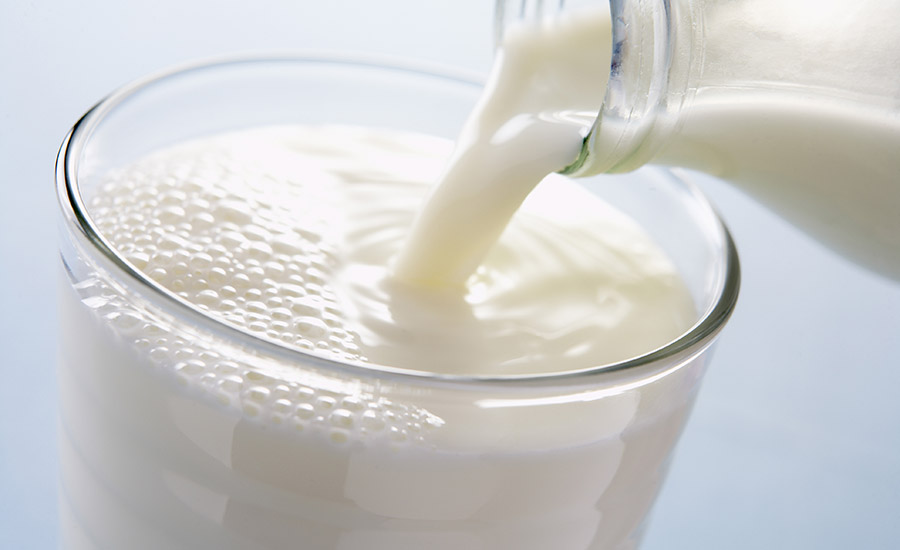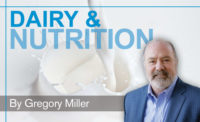The conversation seems to be moving in a more balanced direction for whole milk-based dairy foods (i.e., milk, cheese and yogurt). While nutritional guidance has recommended low-fat and fat-free dairy foods for the past 30 years, the scientific evidence on whole milk and milk products is evolving and appears to be neutral to positive on cardiovascular and metabolic health outcomes. In fact, the comprehensive research on dairy foods, specifically milk, cheese and yogurt – regardless of fat level – is associated with reduced risk of cardiovascular disease and type 2 diabetes.
Full-fat dairy, despite its higher caloric content, does not result in an increased risk for overweight or obesity. In fact, scientific studies have indicated the opposite may be true. The mechanism of action is unknown, but several have been proposed. One may be that eating full-fat dairy increases satiety — the feeling of fullness — and thus leads people to cut calories in other areas.
Health and wellness experts are starting to embrace the evidence and that some fuller fat dairy can fit within a balanced eating plan — opening the window for more flexibility in consumer options.
The heart of the matter
The science on saturated fat and cardiovascular health continues to evolve, with a growing body of evidence indicating saturated fat may not be directly associated with cardiovascular disease (CVD).
Two recently published studies on full-fat cheese resulted in outcomes supporting results of earlier studies showing no effect of consuming high amounts of cheese on LDL cholesterol (LDL-C), a primary risk factor for CVD. This neutral effect on LDL-C would be the opposite of what would be predicted based on the saturated fat content of cheese. The reason for this is unclear, but a potential mechanism of action may have to do with nutrients in cheese such as calcium and/or protein modifying the way the fat is absorbed or metabolized.
Of the different dietary sources of saturated fat, milk fat has one of the most complex fatty acid compositions. Emerging science indicates the effect of milkfat-containing foods on cardiovascular health may be different than other sources of saturated fats.
Packaged in a structure unique to dairy foods known as the milkfat globule membrane (MFGM), it may be that the MFGM and the phospholipids contained within it are one of the mechanisms of action helping whole- and reduced-fat dairy foods to have neutral or beneficial effects on blood cholesterol. This emerging research on the components of dairy fat and whole-milk dairy foods further counters the argument that all sources of saturated fat are equal when it comes to risk for cardiovascular disease.
One of the primary benefits of dairy foods is their effect on lowering blood pressure, as exemplified by the inclusion of three servings of dairy in the DASH eating plan (Dietary Approaches to Stop Hypertension). DASH historically has been limited to low-fat and fat-free versions of dairy foods. But a recent randomized controlled trial indicated that it can be modified to include whole milk, yogurt and cheese, while still providing all the same benefits associated with blood pressure. In fact, the whole-milk DASH diet resulted in an even better overall blood lipid profile than the original DASH.
Dairy and type 2 diabetes
Research indicates dairy consumption, overall, is associated with reduced risk of developing type 2 diabetes. And emerging research is showing a connection between certain dairy-derived fatty acids and lower risk of type 2 diabetes.
A recent study evaluated two large prospective cohorts (i.e., the Nurse’s Health Study and the Health Professionals Follow-up Study) to explore the association between circulating fatty acid biomarkers of dairy fat consumption and incidence of type 2 diabetes among more than 3,000 adults aged 30 to 75 years. Results showed those with the highest versus the lowest blood levels of three dairy-derived fatty acids (C15:0, C17:0 and t16:1n-7) were associated with a 43% to 52% lower risk of type 2 diabetes. These results indicate unique properties in dairy fat may be protective from type 2 diabetes.
What about butter?
While the research above is specific to milk, cheese and yogurt, a meta-analysis found butter consumption was not associated with cardiovascular disease, coronary heart disease or stroke. It was associated with a small but statistically significant reduced risk of type 2 diabetes, despite a weak association with all-cause mortality. Given these findings, there is a need for more published research on the health effects of butter.
Food and beverage companies should consider the mounting research indicating milk, cheese and yogurt – regardless of fat content – are associated with reduced risk of cardiovascular disease and type 2 diabetes when developing products to meet consumers’ health and wellness needs. Whole-milk dairy foods can be part of nutritious eating styles right along with lower fat options, allowing more flexibility for people to enjoy a variety of options.



